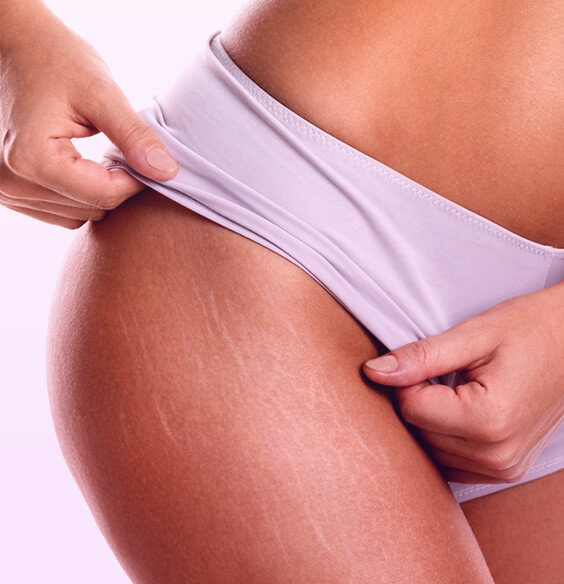
10 Strategies for Disrupting the Addiction Cycle
We recommend helpful products in our articles. Read our full disclosure here. The content on this website is not intended to be a substitute for professional advice, diagnosis, or treatment.
In a world where addiction touches nearly every community, reclaiming control from the grips of substance dependence is a journey that many find challenging, at times even out of grasp.
Yet, understanding the mechanisms of addiction and employing targeted strategies can significantly enhance the success of this vital endeavor.
This article talks about the science of addiction, highlighting practical steps individuals can take to disrupt the cycle of dependence and pave the way toward recovery.
Read on to learn more and take steps to start anew.
Understanding addiction
Addiction is a complex condition, a brain disorder characterized by compulsive engagement in rewarding stimuli despite adverse consequences.
It’s essential to recognize that addiction alters the brain’s wiring, specifically in areas responsible for reward, motivation, and memory.
This understanding is crucial as it underpins the strategies for breaking the addiction cycle, emphasizing that overcoming addiction requires more than sheer willpower.
The impact of substance addiction on physical health
Substance addiction, particularly alcohol addiction, exerts a profound effect on an individual’s physical health, affecting nearly every organ in the body.
Chronic alcohol consumption can lead to liver diseases, such as fatty liver, hepatitis, and cirrhosis, as the liver struggles to process and detoxify the alcohol.
Furthermore, alcohol addiction increases the risk of cardiovascular issues, including hypertension and heart disease, due to its effects on heart rate and blood pressure and the potential for disrupting heart rhythms.
Similarly, drug addiction can have devastating effects on physical health, varying widely depending on the substance abused.
Opioids, for instance, can depress respiratory function, leading to a decreased breathing rate and, in severe cases, death from overdose.
Stimulants like cocaine and methamphetamine can cause severe cardiovascular complications, including heart attacks and strokes, and chronic use can lead to neurological damage and cognitive impairments.
How addiction affects the quality of your life
The impact of substance addiction on a person’s quality of life is profound and multifaceted, affecting physical health, mental health, social relationships, and economic status.
Substance addiction leads to a deteriorating quality of life in several areas apart from physical health:
- Mental health: Substance use disorders are often comorbid with mental health disorders such as depression, anxiety, and bipolar disorder.
The use of substances can exacerbate these mental health conditions, leading to a vicious cycle where each disorder fuels the other.
Substance abuse can also increase the risk of self-harm and suicide.
- Social relationships: Addiction can severely strain relationships with family, friends, and colleagues.
Behaviors associated with addiction, including lying, stealing, and unpredictable mood swings, can erode trust and lead to isolation.
Moreover, the social stigma attached to addiction can further alienate the individual from seeking support.
One example of the impact of addiction on one’s social connections can be commonly seen among individuals with middle-stage alcoholism.
According to Jackson House, these people may knowingly self-isolate in fear of intervention, making it harder to break their dangerous habits.
- Economic status: The financial burden of substance addiction is significant.
The cost of acquiring substances and potential job loss due to decreased productivity or absence from work can lead to economic instability.
Additionally, there may be legal costs associated with substance-related offenses and medical expenses from health issues caused or exacerbated by substance use.
- Legal issues: Substance addiction can lead to legal problems, ranging from possession and distribution charges to driving under the influence (DUI).
These legal issues can result in imprisonment, fines, and a criminal record, further hampering the individual’s ability to find employment and housing.
The cumulative effect of these issues can lead to a significant decline in overall quality of life.
Individuals may experience loss of housing, deteriorating physical and mental health, broken relationships, and reduced opportunities for employment and education.
Strategies for disruption
Disrupting the cycle of addiction involves implementing strategies that address the underlying causes and patterns of substance use.
Successful intervention requires a multifaceted approach that considers the biological, psychological, social, and environmental factors contributing to addiction.
Here are some critical strategies:
1. Cognitive-Behavioral Therapy (CBT)
CBT is effective in changing negative thought patterns and behaviors associated with substance use.
It helps individuals recognize situations in which they are most likely to use substances, develop strategies to avoid those situations, and cope more effectively with a range of problems and behavioral issues associated with substance use.
2. Medication-Assisted Treatment (MAT)
For certain types of addiction, such as opioid and alcohol dependence, MAT can be highly effective.
Medications like buprenorphine, methadone, and naltrexone can help manage withdrawal symptoms and cravings, reducing the likelihood of relapse.
3. Building a support network
Engagement in support groups like Alcoholics Anonymous (AA) or Narcotics Anonymous (NA) provides individuals with a community of peers who understand the challenges of recovery and can offer support.
Family therapy can also be crucial in repairing relationships and building a supportive home environment.
4. Stress management techniques
Disrupting the cycle of addiction through stress management involves adopting techniques that reduce stress and improve emotional resilience, making it less likely for an individual to turn to substances as a coping mechanism.
Here are several effective stress management techniques:
- Mindfulness and meditation: Practicing mindfulness and meditation can significantly reduce stress levels by enhancing present-moment awareness and fostering a non-judgmental acceptance of one’s thoughts and feelings.
These practices can help individuals observe their cravings without acting on them, promoting self-control and emotional regulation.
- Physical exercise: Regular physical activity is a powerful stress reducer.
Exercise releases endorphins, natural mood lifters that can help alleviate stress, depression, and anxiety.
It can also improve physical health and provide a healthy distraction from cravings.
- Relaxation techniques: Techniques such as deep breathing exercises, progressive muscle relaxation, or guided imagery help calm the mind and body, making it easier to cope with cravings and triggers.
Implementing these stress management techniques can be a powerful component of addiction recovery, helping individuals build resilience against the triggers of addiction and fostering a healthier, substance-free lifestyle.
5. Lifestyle changes
Disrupting the cycle of addiction requires comprehensive lifestyle changes that address both the physical and psychological components of substance dependency.
Here are several lifestyle changes that can play a crucial role in overcoming addiction:
- Developing a healthy routine: Establishing a structured daily schedule can provide stability and reduce the unpredictability that may lead to substance use.
Regular meals, exercise, work, and leisure activities can help maintain balance and prevent relapse.
- Engaging in regular physical activity: Exercise helps reduce stress, improve mood by releasing endorphins, and can serve as a positive coping mechanism to replace substance use.
- Adopting a nutritious diet: Nutrition plays a vital role in recovery.
Substance abuse can deplete the body of essential nutrients, so a balanced diet rich in fruits, vegetables, lean proteins, and whole grains can help restore physical health and improve energy levels.
- Improving sleep hygiene: Addiction often disrupts sleep patterns.
Thus, maintaining a regular sleep schedule, creating a comfortable sleep environment, and avoiding caffeine and screens before bed can significantly improve overall well-being and resilience against stress.
By integrating these lifestyle changes, individuals can create a supportive environment for recovery, enhance their ability to cope with stress, and significantly reduce the risk of relapse, ultimately disrupting the cycle of addiction.
6. Avoiding or addressing triggers
The triggers of substance addiction are varied and complex, often intertwined with individual psychological, environmental, and social factors.
Here are some of the most common triggers:
- Stress: High levels of stress are a significant trigger.
Individuals may turn to substances as a coping mechanism to alleviate stress, leading to dependency over time.
- Environmental factors: Being in an environment where drug use is normalized or readily accessible can trigger addiction.
Examples of such environments include growing up in a household with substance abuse, socializing with peers who use drugs or alcohol, or living in communities where substance use is prevalent.
- Trauma: Experiencing traumatic events, especially during childhood, such as abuse, neglect, or witnessing violence, can lead to substance use as a form of escape or to numb emotional pain, increasing the risk of developing an addiction.
Understanding these triggers is crucial for prevention and treatment efforts, highlighting the need for comprehensive strategies that address the multifaceted nature of substance addiction.
7. Developing new hobbies and interests
Engaging in new activities and hobbies can provide positive and rewarding experiences that reduce the appeal of substance use.
These activities can also help fill the time previously spent on substance-related activities.
8. Comprehensive treatment programs
Participating in comprehensive treatment programs that offer a combination of therapy, counseling, skill-building, and sometimes residential treatment can provide a structured approach to breaking the cycle of addiction.
9. Continuous monitoring and adjustments
Recovery from addiction is an ongoing process that may require adjustments to the treatment plan over time.
Continuous monitoring by healthcare providers and open communication about what is and isn’t working is critical to finding the right strategies for everyone.
10. Addressing co-occurring disorders
Treating co-occurring mental health disorders such as depression, anxiety, or PTSD alongside substance use disorder is crucial.
Integrated treatment plans that address both substance use, and mental health can enhance recovery outcomes.
Implementing these strategies requires a personalized approach, as the path to recovery varies significantly from one individual to another.
The most effective treatment plans are those tailored to the specific needs, circumstances, and preferences of the individual seeking help for addiction.
While navigating these strategies, it’s essential to consider the role of specialized rehabilitation facilities, such as Jackson House, which offer comprehensive treatment programs tailored to individual needs.
These facilities provide a structured environment that supports detoxification, therapy, and the development of coping strategies, all crucial elements in the journey toward recovery.
Conclusion
Disrupting the addiction cycle is a challenging yet achievable goal.
It requires a multifaceted approach that includes understanding the nature of addiction, seeking professional help, building a solid support network, and making significant lifestyle changes.
Remember, recovery is a journey of small, consistent steps forward.
"We love to research problems, examine studies, analyze solutions, and share with you ideas that make life healthier. You can learn about us and our editorial standards here. Have suggestions or feedback to share? Send us a message!."













Leave a Comment